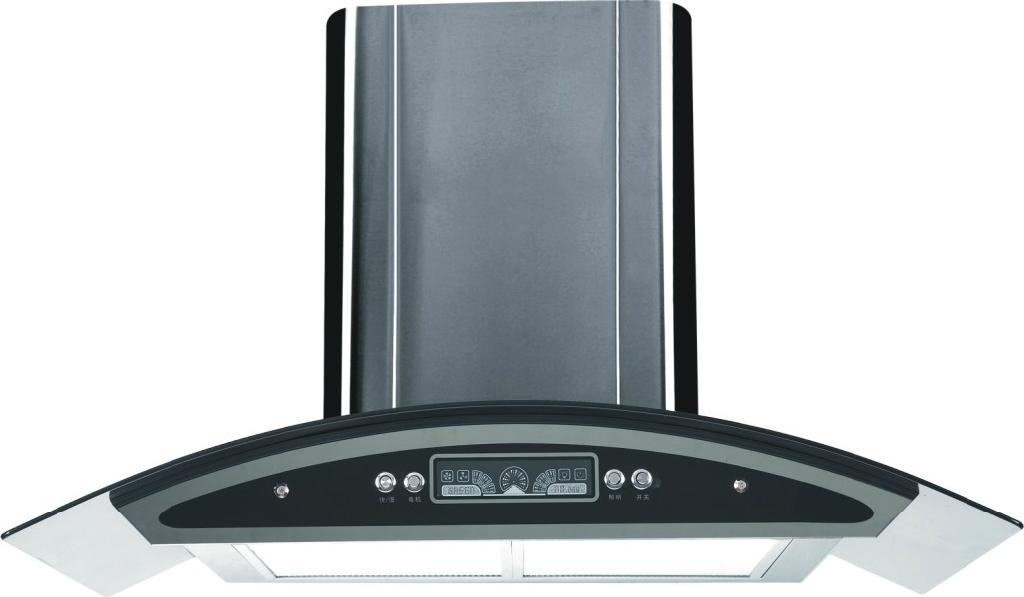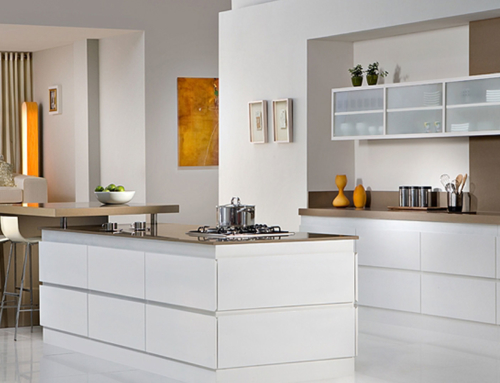Indian cooking involves lot of frying, grilling using lot of oil and masalas. The sound of spluttering tadka though gives a lovely aroma and taste but it also leaves its impression on your kitchen tiles and ceiling. Over a period of time grime collects on the cabinets and over-the-counter appliances. More than cooking, it’s cleaning the kitchen that is cumbersome and discourages many from cooking that sumptuous meal.
An electric chimney sucks the air inside the kitchen. The air then passes through the filters which absorbs the heat and traps the grease particles thereby removing fumes and odor and ventilates your kitchen keeping it fresh and odor free.
On the basis of installation, chimney are of two types.
Ducting or extracting:
How it functions: The air that is sucked in passes through the filters. Grease and grime adhere to the filters and the air is expelled out through PVC pipes or a duct. It requires plumbing installation. The number of bends and the length of the hose pipe affects the suction power. Filter used is either a mesh or baffle filter.
Recycling or ductless:
How it functions: It has fan or blower and motor. The air passes through the grease filter which traps grease particles. The air then passes through the charcoal filters which absorb the heat, smoke and odors. The purified air is circulated back into the kitchen.
Ducting vs Ductless Range Hoods
| Features | Ducting | Ductless | |
| Cost | Goes high with ducting | Less | |
| Filters | Uses Mesh/baffle filters | Additional charcoal filter is needed. | |
| Performance | Industry tests say they are 30 % more effective | Less effective as the air is recirculated back | |
| Maintenance and Care | Easier | Charcoal filters need change at frequent intervals | |
| Suction | High | Less | |
| Efficiency | Higher. Heat and humidity is extracted and ducted out, prevents condensation. | Lesser. It does not remove the heat from the kitchen | |
| Re-positioning | Impractical | Can be done easily | |
Filters: A filter is the heart of the Electric Chimney. It traps the oil particles and purifies the air. On the basis of material and construction filters are of three types.
Mesh Filter: Layers of Aluminum mesh overlapping each other slightly offset. The mesh has very small holes. When the air passes through the filter, oil and grime adhere to the layers. The pores get clogged very soon and affects the performance of the chimney. Requires cleaning every fortnight.
Higher maintenance and frequent cleaning is needed for Indian kitchen because the masalas get coated onto the filter blocking the holes and thus the suction power gets reduced.
Maintenance: Warm soapy water/detergent. Can be cleaned in dishwasher too. The cleaning is easier than baffle filters.
Baffle Filter: Layers of steel/aluminum are overlapped in a fashion which changes the direction of air flow. It uses the ‘cut and chop’ technology to separate oil and spices from the smoke. The suction power gets hardly affected even if the oil gets collected in the first layer. Perfect for Indian style of cooking.
Maintenance: Needs cleaning once in 5-6 months. Gets rusted with use. Some models have easy removal others require technician. The filters need change in 4-5 yrs.
Charcoal Filters: They are primarily used for odor absorption. It has a block with charcoal granules. The absorption capacity depends upon the thickness of filter and size of charcoal granules. It is used in Ductless chimneys. It does not come in-built in always but available at an extra cost.
Maintenance: Needs periodical replacement 3-6 months depending upon the intensity of cooking. It cannot be washed. Some high end models have indicators for filter change.
On the basis of functionality and fashion chimneys can be categorized into conventional and contemporary.
Conventional chimneys are straightline chimneys that basically perform the sole function of keeping the kitchen fresh and ventilated are available in both ducting and ductless mode
The contemporary chimneys come in various design and types to suit your budget and lifestyle. They have a hood which again comes in various styles.
Wall Canopy Hood
Types of hoods
- Wall canopy They are the most common hoods. They are fixed onto the wall and the hood hangs above the stove. It comes in various styles and designs.
- Downdraft chimney It is a very stylish and sleek chimney which comes over the stove when in use. It has a push button which pops and retracts the chimney.
- Island canopy They are fixed on the ceiling and seem like hanging from nowhere. They are for the counter-top cooking ranges and gas stoves. It is an ideal choice for hobs with western styled counters.
- Built-in or integrated hood They remain concealed behind or under the cabinets and blend with the tapestry of the kitchen.
Pointers to ponder before buying a chimney
- Suction Power Is the capacity of the motor to suck oil particles and odor. It is measured in cubic meter per hour(m3 per hour). For Indian kitchen a chimney with higher air suction capacity is ideal. For frequent cooking the range should be between 400 m3/hr to 1000m3/hr depending on the size of your kitchen. The chimneys with a long hose have generally more suction power.
- Filters If the filter does not function properly the suction becomes poor and can pose a health hazard. The choice of the right filter improves the performance of the chimney.
- Motor/Blower The motor should be sealed so that dust and grime does not get into it. Aluminum non-stick blower and motor saves you from agony of periodic servicing of internal parts.
- Size The size depends on the size of the kitchen. A 3feet stove should have a 3feet chimney. Standard chimneys come in 2ft and 3ft size.
- Maintenance and Care It is advisable to go for a chimney which requires less maintenance. Install the chimney at low height (4feet) so that cleaning is easy and it effectively removes the smoke and oil particles out.
- Budget Electric chimneys come in the price range of Rs 3000 to Rs 100000.
- Noise The noise that is heard is that of the air circulation. You may like to consider this before buying your chimney. Some chimneys have a silent-kit installed which makes it silent or less noise.
- Speed Entry level chimneys have single speed option but advanced ones have variable speeds to ventilate the kitchen faster.
- Aesthetics Chimneys are available to suit every section and taste of the society ranging from modest rates to expensive ones. Depending on your budget, lifestyle and kitchen décor you may choose the best. Some brands have the option of customizing the looks to match your kitchen décor.
- Warranty and Service Most chimneys come with warranty of 12 months but some chimneys come with lifetime warranty. Check for after sales services in your locality because some baffle filters need technician for cleaning them.
Advanced features
Auto Clean chimneys: Once you switch the chimney ON, the coil that cover the motor gets heated up for 15 to 20 mins. The oil gets liquidized and is let out .The chimney stops after auto cleaning itself..
Split chimney: The motor is installed outside the kitchen hence reducing the sound.
Convertible kits: Some brands have kits wherein a ducting chimney can be converted into a ductless chimney.
Soundproof kits: They ensure that there is absolutely no noise of the chimney.
Detachable oil collector: The oil particles get collected in this and its easy to detach and clean thereby improving the efficiency of the filter.
Auto heat sensor: It detects heats and oil particles and automatically switches on and off.
Indicator/buzzer: They have indicator lamps or alarms for filter cleaning or replacement.
<div data-WRID=”WRID-149017717603556768″ data-widgetType=”Push Content” data-class=”affiliateAdsByFlipkart” height=”90″ width=”728″></div><script async src=”//affiliate.flipkart.com/affiliate/widgets/FKAffiliateWidgets.js”></script>




